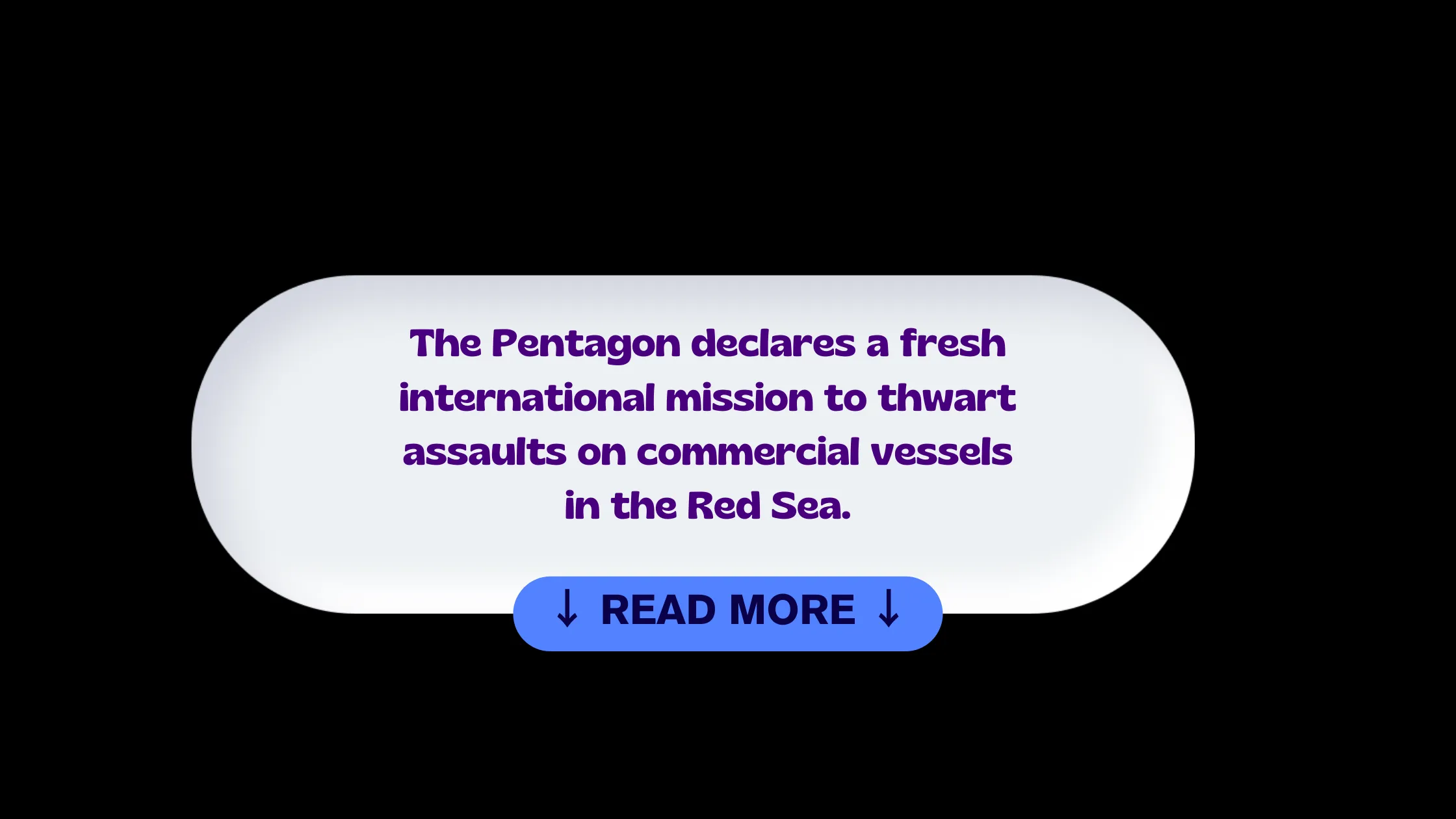The U.S. Department of Defense has announced the establishment of a new international mission aimed at countering attacks on commercial vessels in the Red Sea. Named Operation Prosperity Guardian, this multinational security initiative involves several countries including the United States, United Kingdom, Bahrain, Canada, France, Italy, Netherlands, Norway, and Spain .
The primary focus of the operation will be the southern Red Sea and the Gulf of Aden. The mission will be coordinated by the existing Combined Task Force 153, which was set up in April 2022 to improve maritime security in the Red Sea, Bab el-Mandeb, and the Gulf of Aden.The U.S. Defense Secretary Lloyd Austin has stated that the seriousness of the attacks, many of which have damaged the vessels, has led to this collective action . The operation will involve joint patrols and providing intelligence support in the southern Red Sea and the Gulf of Aden.The U.S. has also called on the United Nations Security Council to take action against the attacks . In a letter to council members, U.S. Ambassador Linda Thomas-Greenfield stated that Houthi attacks targeting commercial vessels threaten international maritime security, navigational rights and freedoms, and international commerce . The new mission comes amid an increase in attacks on commercial vessels in the region. In one recent incident, Houthi-controlled areas of Yemen fired drones and ballistic missiles at vessels, causing significant damage .
Pentagon Leads New Global Mission to Protect Ships in the Red Sea
The Red Sea, a narrow waterway between Africa and Asia, is a vital shipping route for oil and other goods. Recently, ships in the area have been attacked by drones and missiles, causing damage and delays. These attacks have been blamed on Houthi rebels based in Yemen. To stop these attacks, the Pentagon has announced a new international effort. They will work with other countries to patrol the Red Sea and protect commercial ships.
What is the Red Sea?
The Red Sea is a long, narrow body of water that separates the Arabian peninsula from northeast Africa. It connects to the Mediterranean Sea through the Suez Canal in the north, and to the Indian Ocean via the Gulf of Aden in the south. The Red Sea is about 1,200 miles long and only about 220 miles wide at its widest point. About 10% of the world’s shipped goods go through the Red Sea, making it incredibly important for global trade.
Why are there attacks in the Red Sea?
The recent attacks in the Red Sea are part of the ongoing conflict in Yemen. Yemen is a country on the southern tip of the Arabian Peninsula. For many years, Houthi rebels have been fighting against the Yemeni government, which is backed by Saudi Arabia and its allies. The Houthi rebels often fire missiles and launch drone attacks against Saudi Arabia, and they’ve begun targeting ships in the Red Sea as well. This includes ships that belong to America’s allies. The Houthis claim their attacks are a response to the Saudi-led bombing campaign in Yemen that has caused a severe humanitarian crisis.
Why is the Pentagon getting involved?
The Pentagon is worried about the attacks on shipping in the Red Sea because they could disrupt global trade. This could cause goods to become more expensive, especially energy products like oil and gas. The US also has strong allies in the region, including Israel, who depend on safe passage through the Red Sea. It’s in the best interests of the US to protect this critical trade route and help its allies.
What will the new mission do?
The new international mission will focus on several key things:
- Patrols: Ships from the US and its partners will patrol the Red Sea and the Bab el-Mandeb Strait, a narrow waterway at the southern end of the Red Sea.
- Intelligence Sharing: Countries involved in the mission will share information about threats and help each other identify potential attacks.
- Protecting Ships: The mission will work to stop attacks on commercial ships and, if necessary, directly protect them from attack.
Which countries are involved?
The US is leading the new mission, but several other countries have also agreed to join. These countries include:
- Saudi Arabia
- Israel
- The United Arab Emirates
- Other countries that have not been publicly named
What are the challenges?
The new mission faces several big challenges:
- The Houthis: The Houthi rebels are determined to continue their fight against Saudi Arabia and they often attack targets with little or no warning.
- Yemen’s Complex Situation: The civil war in Yemen is complicated and has been going on for a long time. There are many groups with different goals, making it difficult to find a lasting solution.
- Iran: Iran backs the Houthi rebels in Yemen, providing them with weapons and training. This makes the situation much more dangerous and might lead to further conflict in the region.
- Wide Area: The Red Sea is a large area to patrol, and the countries involved in the mission will need to ensure they have enough ships and resources to be effective.

